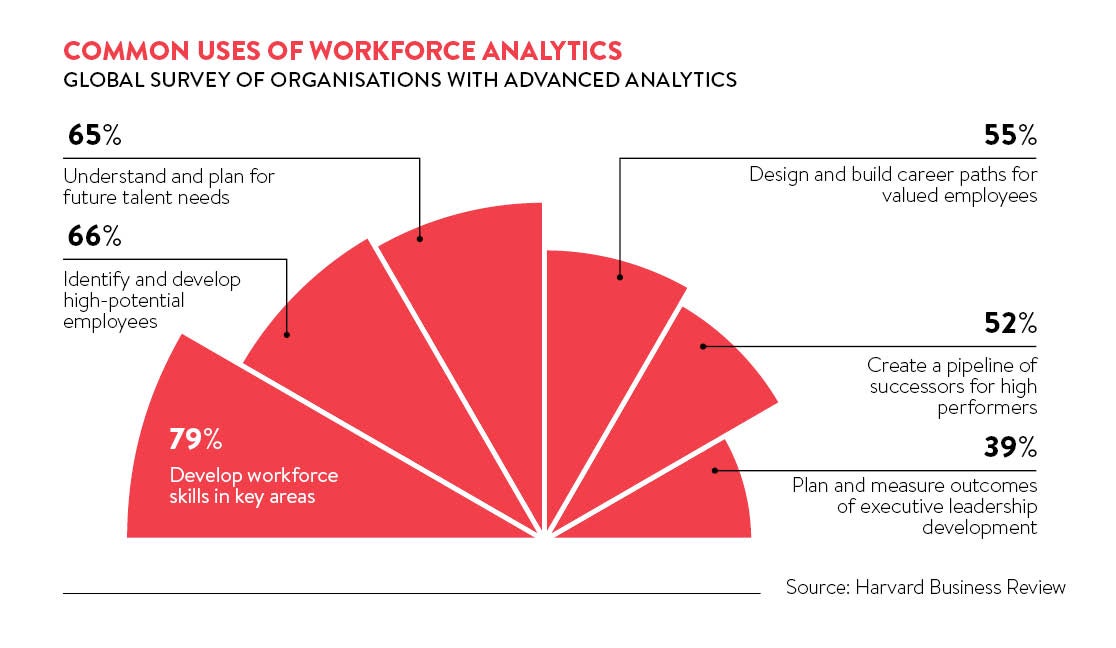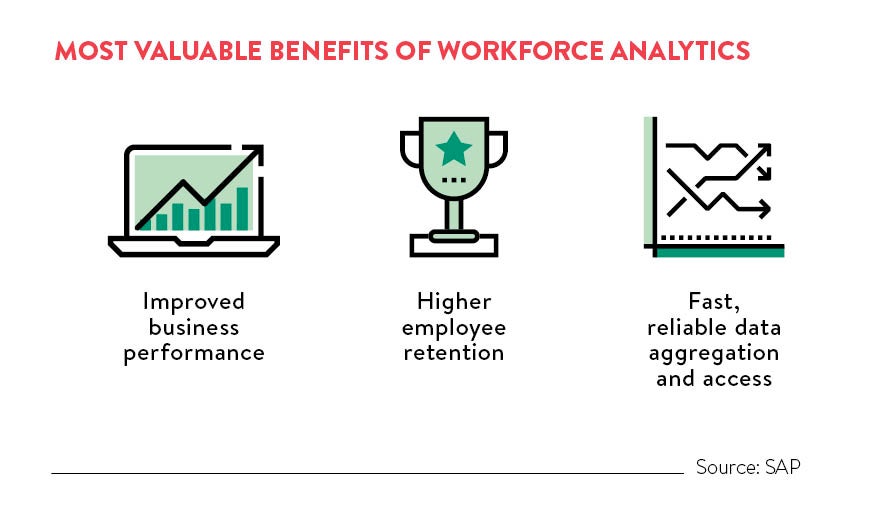People analytics are the latest buzzwords to hit human resources and talent management. But these two words shouldn’t be dismissed as just another piece of management speak as they sum up the potential for businesses to drive decisions based on the use of data, drawing on insight that has up to now been unattainable.
Explaining analytics
“In its advanced form, it enables predictions to be made,” explains Dilys Robinson, principal research fellow at the Institute for Employment Studies. “It is used to gain a greater understanding of key business questions or problems, so it is more than people metrics or management information. But the majority of organisations, even those producing good quality people metrics, do not use people analytics in this way.”
Data can be drawn from a variety of sources, including employee engagement surveys, absence records, training information and work scheduling, she adds.
It is used to gain a greater understanding of key business questions or problems, so it is more than people metrics or management information
While many are not using this to its full extent yet, most organisations are at least engaging in some kind of analysis of their people data, says Tom Marsden, chief executive of people analytics company Saberr. What they are not doing, however, is using this to make forward predictions.
“It’s estimated that the number of businesses doing this is as low as 5 per cent,” he says. Examples of organisations that are include Google, which has changed its recruitment criteria based on identifying particular characteristics of successful hires, and McKinsey and JetBlue, which have spotted some of the causes of attrition in key staff, reducing attrition by up to 25 per cent.
Learning from marketing
One issue slowing down the uptake of people analytics is human resources departments’ lack of natural instinct for data, Brian Kropp, HR practice leader at CEB, believes. “A useful question to pose is what can HR learn from marketing? Marketing have developed analytics capabilities, including how to analyse unstructured data, how to segment their data and how to target analysis on customer needs, as well as outcome metrics to show the impact of decisions and actions,” he says.
HR is also hampered by the quality of data it has, which tends to be around volumes rather than quality, as well as the old issue of data being kept on disparate technology platforms.

Jo Harley, managing director at engagement technology firm Purple Cubed, advises HR to keep things simple in the early days. “Start by understanding what is right for your organisation and its culture,” she says. “Then adopt a few easy-to-access measures and increase over time. A few quick wins, demonstrating how people analytics can add real value to the business, will enable buy-in at the top.”
She identifies four main areas where HR should look to make use of data as talent management, recruitment, learning and development, and engagement.
[embed_related]
Workforce planning
One of the biggest potential areas is workforce planning, helping organisations assess future requirements and match these to available talent. “Organisations can determine which existing workers they want to secure or nurture in which locations, the likelihood of people considering a change and then accurately inform the hiring process about the type of person they should be hiring,” says Belinda Johnson, owner of employment research consultancy Worklab.
“Within this hiring capability, employers should have truly engaged talent pools through which they are identifying potential new hires based on building up a profile of their credentials but, again, this is not a widespread capability yet.”
Some organisations, such as HCL Technologies, are making use of people analytics in this space. “It helps us to balance our workforce to ensure we have access and availability of the right skills, at the right time, in the right place and at the right cost,” says Prithvi Shergill, chief HR officer. “We have also used people analytics for predicting employee retention and talent fulfilment, as well as profiling talent to enhance performance.”
At a more simplistic level, the concept can also be used to track how happy and engaged employees are; data which can then be used to identify any underlying issues with staff. “Usually in the form of survey questions, businesses are looking for employee feedback on the human factors which affect their work, so the extent to which they are happy, inspired, and empowered,” says Jody Aked, head of service design at Happiness Works. “They also touch on relationships: how are teams working together and what can this tell us about efficiency, productivity and staff retention.”

The principle could even be extended to helping to identify potential risks to the business from employees, through monitoring people’s digital interactions, says Scott Weber, managing director of Stroz Friedberg. “Employees intent on damaging an organisation typically share psychological traits, which are often expressed through the employee’s choice of language,” he says. “By recognising patterns in word choice, existing at-risk employees can be identified before an incident.”
Such analysis need not be solely inward-looking, either. Luxury hotel operator The Dorchester Collection uses data from staff and customers to help shape both its employee offering and guest experiences.
“We know that the hotels where employee engagement is highest are also where guests are the most engaged,” says Eugenio Pirri, vice president, people and organisational development of the hotel chain. “Heightened engagement on both parts results in improved customer focus, business performance and revenues. We’re also able to recruit better, finding the right people based on our culture and fit, and then placing them in the right roles with clear development tailored to their needs and ambitions.”
Edward Houghton, CIPD’s research adviser, human capital and metrics, believes data analytics could have a positive effect on HR’s own role in the business. “The growth of HR analytics could provide HR with greater persuasive evidence to both inform organisational strategy and demonstrate their value-adding contribution to business performance,” he says. “But first they need to make a strong business case for investment in the area.”
It’s a point also made by Giles Slinger, director at data analytics firm Concentra. “HR needs to get very good at telling a clear story,” he says. “It is not enough to say ‘our six-month rolling attrition rate is down 0.1 per cent’. You need to be able to point to a chart and say ‘this area had the highest level of attrition in top performers in 2015 and it also had the lowest engagement scores – that cost us $3 million in replacing staff and 2,000 dissatisfied
Explaining analytics
Learning from marketing






